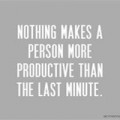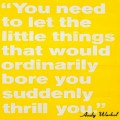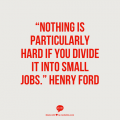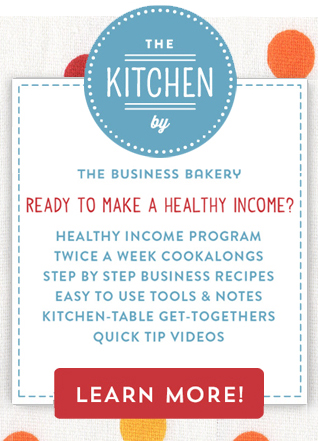#11 Lunch and Learn: how to give your ideas a go without it costing you a fortune
Written by Julia Bickerstaff // March 6, 2012 // Daily Juice // No comments
What it is:
An experiment!

Why it works:
If you hark back to school days and the chemistry lab you may remember doing good old scientific experiments. The best ones (from a scientists point of view, not mine; Bunsen Burners were not my thing) was to come up with a hypothesis (“we think A will happen”) and then prove, with a test, whether it was true.
The key to the success of the experiment was working out what you expected the outcome to be before you started the test. That way you could understand the result and would be under no illusions as to whether it had worked or not!
The same can be applied to new business ideas.
Setting them up as an experiment can help us to understand whether they have worked or not.
This is a terribly important point because often we get so carried away with our ideas that we never stop to pay them proper attention and we don’t check in to see whether they have actually worked!
What you do:
Take the next idea you have and run it through this little process:
Let’s say we have an idea to run a referral campaign to drum up new clients.
- Take a piece of paper (or a word doc or whatever)
- Head it up “Idea 1: Referral campaign
- Work out what you would like the result, as a minimum, to be. For example you might set the result as ‘10 new clients’
- Next write a subheading “Hypothesis” and under that write, ‘our referral campaign will bring in 10 new clients”
- Then write the next heading “Method”. This is where you write out the test that you are going to do (Something here along the lines of asking current customers to refer a friend). Put some detail in here, for example the number of customers you are going to approach (100) and the time period you are going to run the experiment over
- Keep some records. Set up a spreadsheet or something similar so you can track the work you’ve done (“asked current customers”) with the results (“new customers won”)
- At the end of the time period you set, tally up the results.
- If you hit your target or did better, the experiment is a success. If you missed target by a little bit you need to weigh up whether it was worth the effort. And if you missed it by a lot, you know to stop and have a re-think.
Now you may be thinking that this recipe sounds very obvious. It is. But most small businesses don’t put this type of discipline in place. Instead many of us start off on our new ideas and merrily continue not realising that we are spending a heap of time and money on an idea that doesn’t work.
Test-tubes to the ready!

Fancy getting a weekly Snack of sweet stuff for your small business? Just pop your details in below.






















